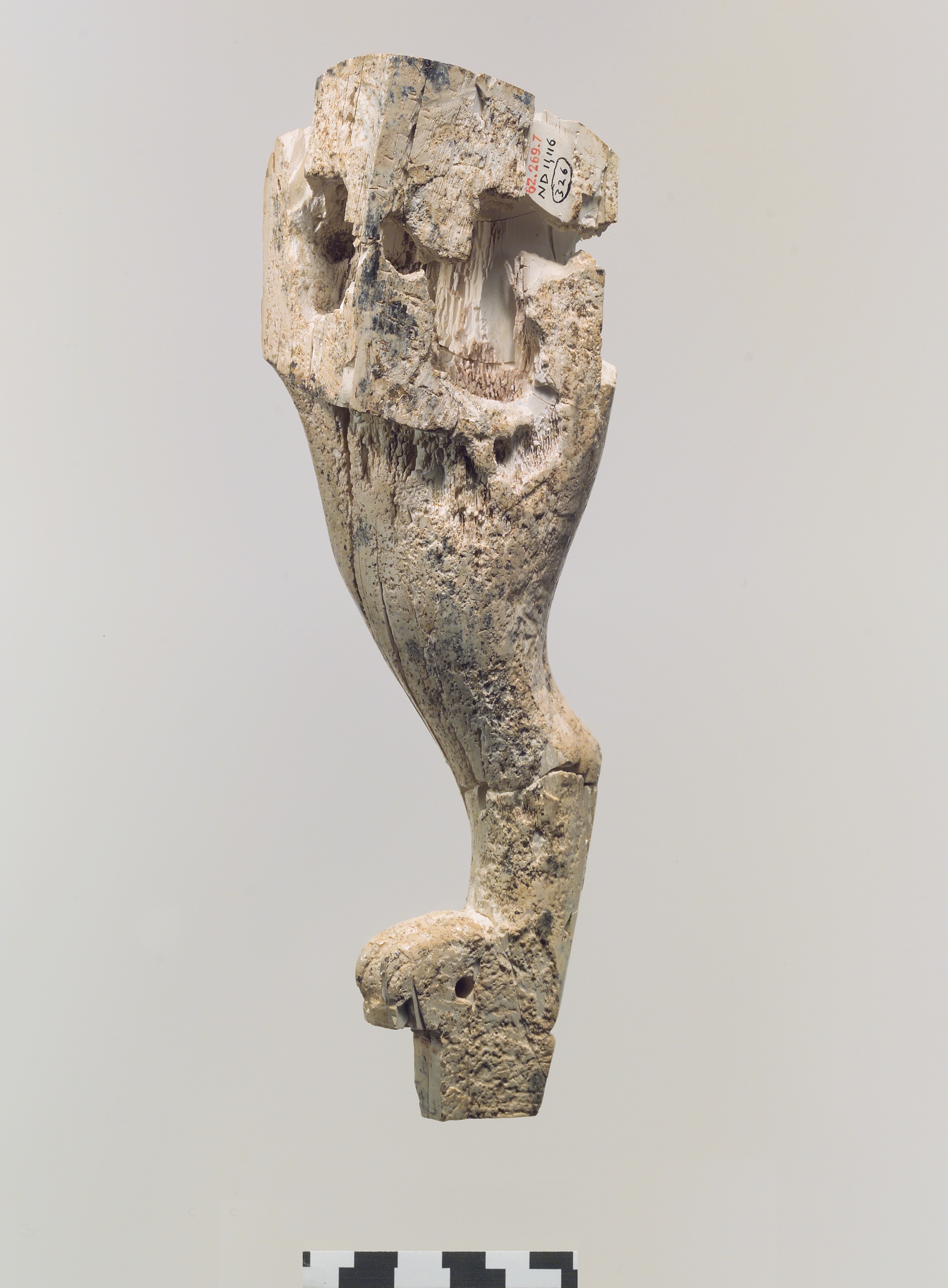Furniture support carved in the round with a lion's hind leg
Not on view
This piece is carved into the shape of a lion’s right hind leg. It was found in a large storeroom at Fort Shalmaneser, a royal building at Nimrud that was probably used to store booty and tribute collected by the Assyrians while on military campaign. The leg muscles are softly rendered and the three claws are individually articulated in low relief. A dowel hole that pierces the inner paw and the trapezoidal tenon on which this leg stands suggest that this piece was fitted into a frame, likely as part of a piece of furniture. The inner side of the leg is flat and the upper portion is square-cut with two large, poorly preserved mortises at either side of the thickest area, likely to secure it to the piece of wooden furniture to which it originally belonged. For example, sphinx thrones, a type of ceremonial chair flanked by sphinxes likely influenced by Egyptian palanquins, are depicted in Phoenician art and were used by Phoenician kings.
Built by the Assyrian king Ashurnasirpal II, the palaces and storerooms of Nimrud housed thousands of pieces of carved ivory. Most of the ivories served as furniture inlays or small precious objects such as boxes. While some of them were carved in the same style as the large Assyrian reliefs lining the walls of the Northwest Palace, the majority of the ivories display images and styles related to the arts of North Syria and the Phoenician city-states. Phoenician style ivories are distinguished by their use of imagery related to Egyptian art, such as sphinxes and figures wearing pharaonic crowns, and the use of elaborate carving techniques such as openwork and colored glass inlay. North Syrian style ivories tend to depict stockier figures in more dynamic compositions, carved as solid plaques with fewer added decorative elements. However, some pieces do not fit easily into any of these three styles. Most of the ivories were probably collected by the Assyrian kings as tribute from vassal states, and as booty from conquered enemies, while some may have been manufactured in workshops at Nimrud. The ivory tusks that provided the raw material for these objects were almost certainly from African elephants, imported from lands south of Egypt, although elephants did inhabit several river valleys in Syria until they were hunted to extinction by the end of the eighth century B.C.
Due to rights restrictions, this image cannot be enlarged, viewed at full screen, or downloaded.
This artwork is meant to be viewed from right to left. Scroll left to view more.



